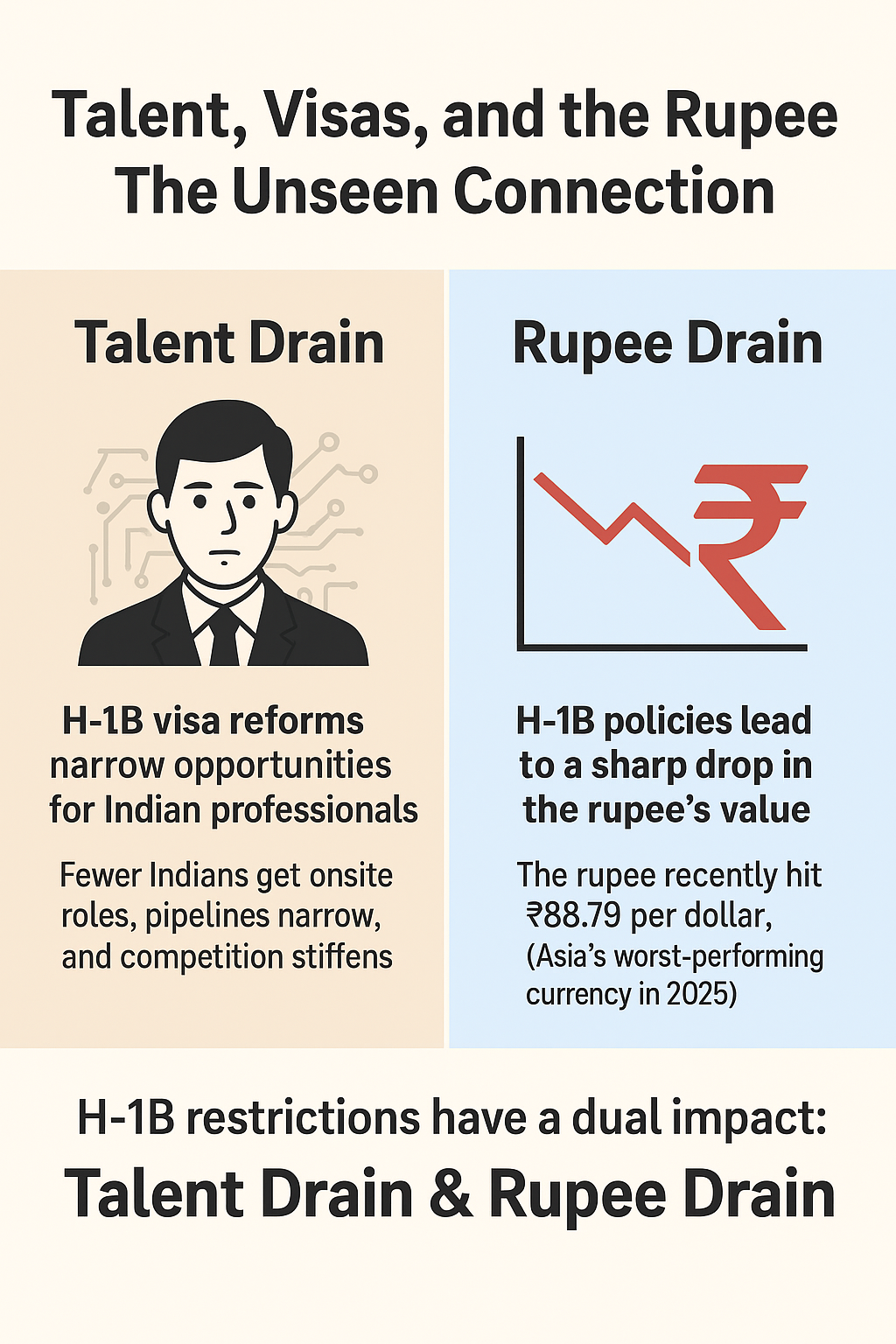The recent developments around U.S. H-1B visa policy changes have sparked concern, not only for Indian professionals seeking opportunities abroad but also for India’s macroeconomic stability.
Talent Bottleneck
Stricter visa regulations and higher fees mean fewer Indian professionals may make it to U.S. shores. This doesn’t block talent entirely—it simply forces companies to become selective, choosing only the most “highly skilled” individuals. While global leaders like Sundar Pichai and Satya Nadella are proof of Indian excellence abroad, the pipeline for the next generation may shrink.
This creates a paradox: India has an abundance of skilled professionals, yet global doors are narrowing, leaving many aspirants stranded.
Economic Ripple Effects
This policy shift is not just a talent issue. It’s also an economic one.
Remittances from Indian professionals in the U.S. form a crucial inflow of foreign exchange. Reduced mobility may mean lower remittance inflows.
The rupee has already slid to a record ₹88.79 per dollar, making it Asia’s worst-performing currency in 2025.
Foreign portfolio outflows and tariff uncertainties are adding pressure to an already fragile rupee.
Global Perception of Indian IT
While firms worldwide still recognize India as a critical hub for tech talent, restrictive U.S. visa policies may push Indian firms to strengthen ties with Europe, Singapore, and other regions. India’s IT exports will continue, but the growth trajectory could slow if a major destination like the U.S. becomes harder to access.
What This Means for the Future
India must diversify markets for its talent exports, reducing overdependence on the U.S.
The rupee’s weakness is a warning sign that policy shifts abroad directly affect domestic stability.
Policymakers and businesses alike must explore stronger bilateral ties, safeguard remittance channels, and invest in domestic R&D and innovation to retain talent at home.
Bottom line: The H-1B debate is no longer just about visas—it’s about how global policy changes impact India’s talent pipelines, remittance flows, and currency strength. This moment calls for resilience, adaptation, and proactive strategy.
